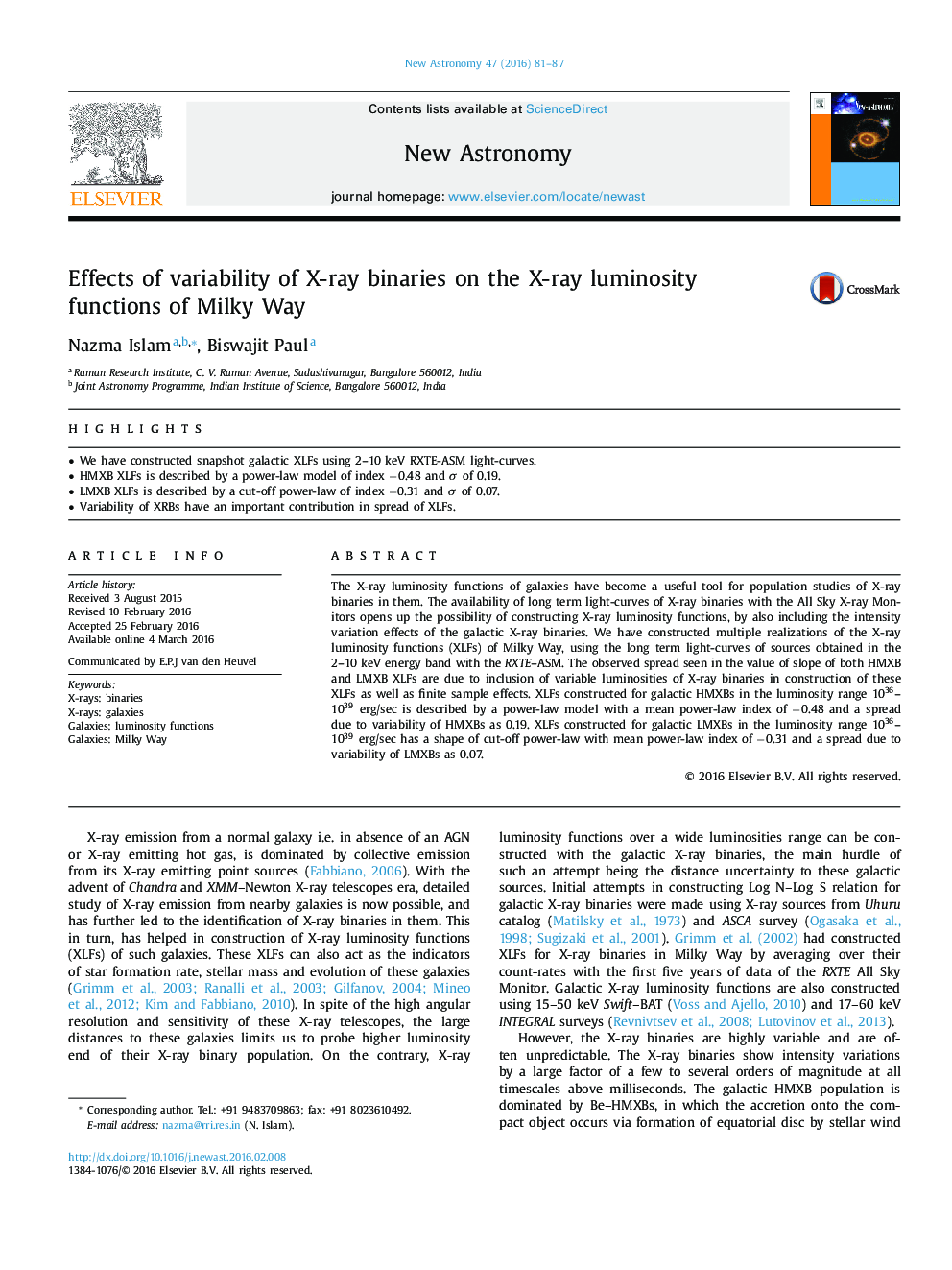| Article ID | Journal | Published Year | Pages | File Type |
|---|---|---|---|---|
| 1778770 | New Astronomy | 2016 | 7 Pages |
•We have constructed snapshot galactic XLFs using 2–10 keV RXTE-ASM light-curves.•HMXB XLFs is described by a power-law model of index −−0.48 and σ of 0.19.•LMXB XLFs is described by a cut-off power-law of index −−0.31 and σ of 0.07.•Variability of XRBs have an important contribution in spread of XLFs.
The X-ray luminosity functions of galaxies have become a useful tool for population studies of X-ray binaries in them. The availability of long term light-curves of X-ray binaries with the All Sky X-ray Monitors opens up the possibility of constructing X-ray luminosity functions, by also including the intensity variation effects of the galactic X-ray binaries. We have constructed multiple realizations of the X-ray luminosity functions (XLFs) of Milky Way, using the long term light-curves of sources obtained in the 2–10 keV energy band with the RXTE–ASM. The observed spread seen in the value of slope of both HMXB and LMXB XLFs are due to inclusion of variable luminosities of X-ray binaries in construction of these XLFs as well as finite sample effects. XLFs constructed for galactic HMXBs in the luminosity range 1036–1039 erg/sec is described by a power-law model with a mean power-law index of −−0.48 and a spread due to variability of HMXBs as 0.19. XLFs constructed for galactic LMXBs in the luminosity range 1036–1039 erg/sec has a shape of cut-off power-law with mean power-law index of −−0.31 and a spread due to variability of LMXBs as 0.07.
